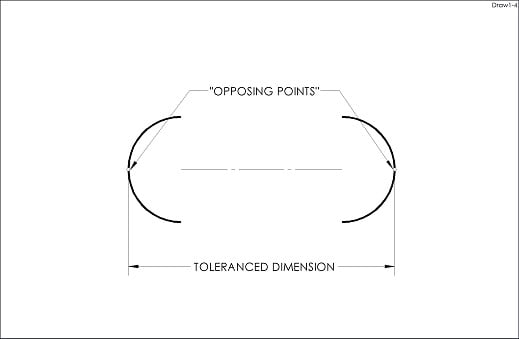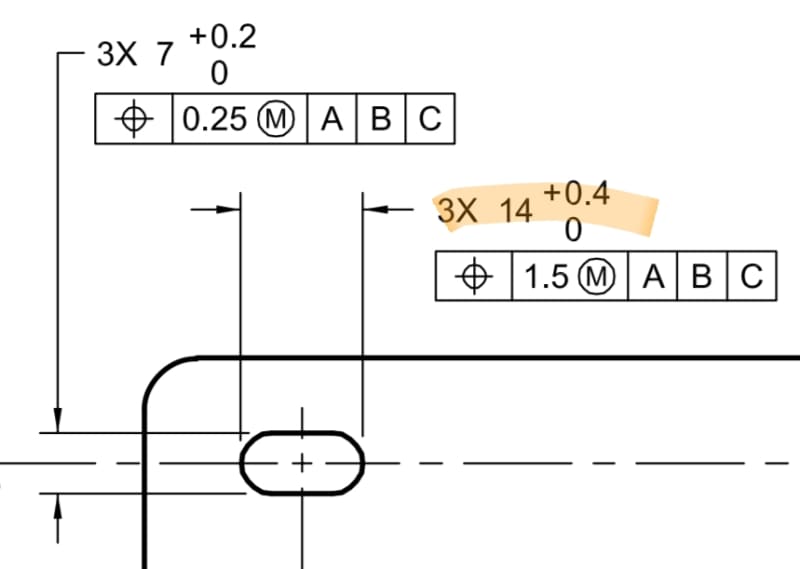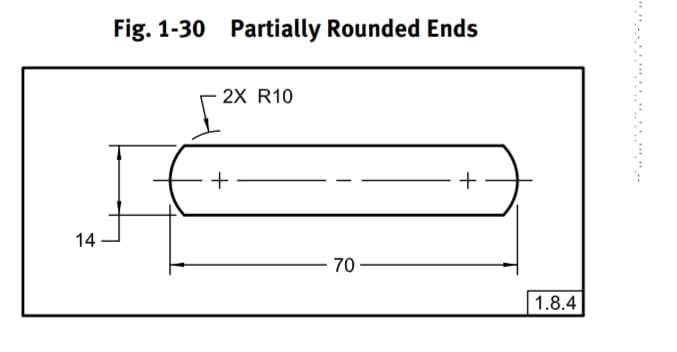Consider fig. 7-34 of Y14.5-2009 or 10-35 of Y14.5-2018.
My first question is - would you say that the position tolerance applied on the 14mm length of slot dimension could be interpretable/inspectable if the position tolerance was applied at RFS, or handled according to the center plane interpretation of MMC?
And the second question is, how would you construct the MMC boundary had the end radii of the slot weren't tangent to the horizontal parallel surfaces and dimensioned by directly toleranced radii? For example 6X R8+/-0.2
My first question is - would you say that the position tolerance applied on the 14mm length of slot dimension could be interpretable/inspectable if the position tolerance was applied at RFS, or handled according to the center plane interpretation of MMC?
And the second question is, how would you construct the MMC boundary had the end radii of the slot weren't tangent to the horizontal parallel surfaces and dimensioned by directly toleranced radii? For example 6X R8+/-0.2



